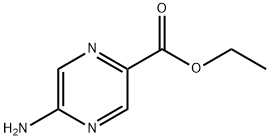What are caustic soda crystals? What is the crystal structure? How to make caustic soda crystals.
Do you Know the Caustic Soda Crystals: Structure, Production, and Applications?
Related Products More >
-
- CNY equest For Quotation
-
- 1310-73-2
- CNY equest For Quotation
-
- 1310-73-2
- equest For Quotation
-
- equest For Quotation
- 50KG
-
- equest For Quotation
- 25 kg bags
-
- equest For Quotation
- 25kg/bag
-
- equest For Quotation
- 25kg/bag



 沪ICP备2021018848号-5
沪ICP备2021018848号-5

Caustic soda crystals are primarily produced through the chloralkali process, which involves the electrolysis of brine (sodium chloride solution) to generate sodium hydroxide, chlorine gas, and hydrogen gas. The sodium hydroxide solution is then concentrated through evaporation and cooled to form crystals. Due to the hazardous nature of the chemicals and high temperatures involved, this process is typically carried out on an industrial scale. For everyday use, it is safer and more practical to purchase pre-made caustic soda crystals from chemical suppliers rather than attempting to produce them at home.
Crystal Structure
The crystal structure of sodium hydroxide is quite complex due to its tendency to form hydrates. Sodium hydroxide monohydrate has an orthorhombic crystal system. In its purest form, without any water, sodium hydroxide forms a cubic crystal lattice where each sodium ion (Na⁺) is surrounded by six hydroxide ions (OH⁻) and vice versa, creating an ionic bond network. However, because NaOH easily absorbs water, it's more common to encounter hydrated forms with varying degrees of hydration.
Making Caustic Soda Crystals
Creating caustic soda crystals involves dissolving solid sodium hydroxide in water and then allowing the solution to evaporate slowly, which causes the sodium hydroxide to crystallize out of the solution. Here’s a basic method:
Safety First: Ensure you wear appropriate personal protective equipment (PPE) including gloves, goggles, and protective clothing as sodium hydroxide is extremely corrosive.
Dissolution: Carefully add sodium hydroxide pellets or flakes to a beaker containing distilled water. The reaction is exothermic, so the mixture will heat up significantly. It’s important to add the solid to the water, not the other way around, to prevent splashing.
Stirring: Stir the solution until all the solid dissolves. This might take some time depending on the amount of sodium hydroxide added.
Evaporation: Pour the solution into a shallow dish to increase the surface area for faster evaporation. Place the dish in a well-ventilated area where it won’t be disturbed. Covering the dish with paper or cloth that allows air circulation while keeping dust out can be helpful.
Crystal Formation: Over time, as the water evaporates, sodium hydroxide crystals will begin to form. You can encourage larger crystal formation by suspending a small piece of solid sodium hydroxide or a seed crystal in the solution using a string or a fishing line.
Remember, working with caustic soda requires caution at all times due to its highly reactive nature. Always handle with care and follow safety guidelines meticulously.
To make caustic soda crystals, two main methods can be used. The evaporation crystallization method starts with dissolving high - purity sodium hydroxide in distilled water to create a saturated solution. Due to the exothermic nature of this dissolution, care must be taken. The solution is then slowly heated on a water bath or with a low - heat flame in an evaporating dish. As water evaporates, the solution becomes more concentrated. Once it reaches supersaturation, crystals begin to form. After natural cooling, the crystals are filtered and dried.
The cooling crystallization method involves preparing a high - temperature saturated solution by dissolving sodium hydroxide in hot water. The more sodium hydroxide dissolved at high temperatures, the greater the yield of crystals. The hot solution is then rapidly cooled, either in a cool water bath or a low - temperature environment. As the temperature drops, the solubility of sodium hydroxide decreases, causing crystals to precipitate. These are then separated from the mother liquor and dried. However, given the highly corrosive nature of caustic soda, it is crucial to wear proper protective gear like gloves and safety glasses throughout the preparation process to prevent any harm to the skin and eyes.